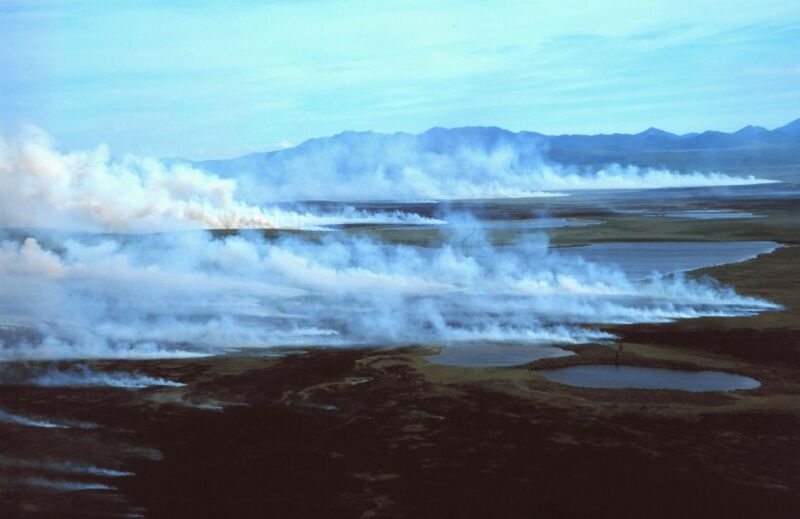
Enlarge / White smoke rising from the tundra in front of the Baird Mountains. (credit: Western Arctic National Parklands (CC BY 2.0))
Each winter, as snow blankets Alaska and northern Canada, the wildfires of the summer extinguish, and calm prevails—at least on the surface. Beneath all that white serenity, some of those fires actually continue smoldering underground, chewing through carbon-rich peat, biding their time. When spring arrives and the chilly landscape defrosts, these “overwintering” fires pop up from below—that’s why scientists call them zombie fires.
Now, a new analysis in the journal Nature quantifies their extent for the first time, and shows what conditions are most likely to make the fires reanimate. Using satellite data and reports from the ground, researchers developed an algorithm that could detect where over a decade’s worth of fires—dozens in total—burned in Alaska and Canada’s Northwest Territories, snowed over, and ignited again in the spring. Basically, they correlated burn scars with nearby areas where a new fire ignited later on. (They ruled out cases that could have coincided with a lightning storm, as well as ones close enough to people to have been caused by an accidental ignition.) They calculated that between 2002 and 2018, overwintering fires were responsible for 0.8 percent of the total burned area in these lands. That sounds small, but one year stood out: 2008, when a single zombie fire was actually responsible for charring 38 percent of the total burned area.





